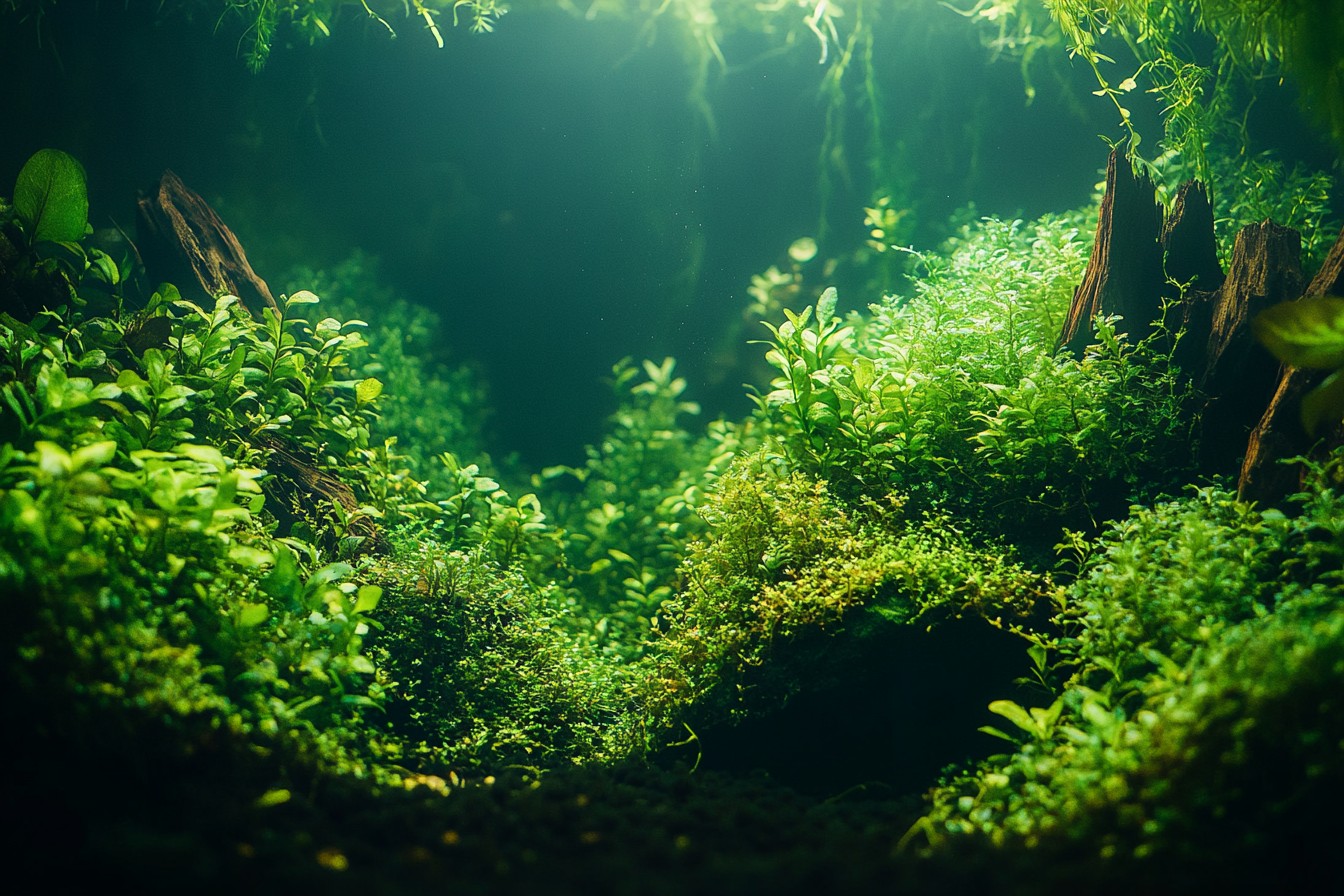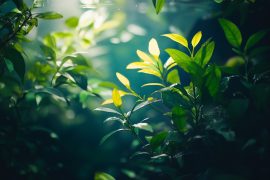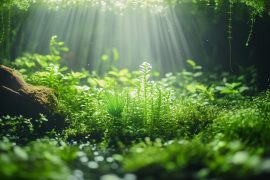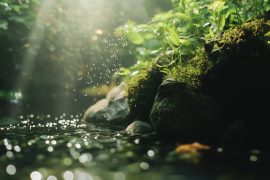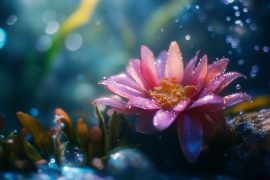There’s something almost defiant about a jungle-style aquascape. While the aquascaping world fawns over the minimalist perfection of Iwagumi layouts and the mathematical precision of Dutch tanks, jungle tanks thumb their noses at restraint altogether. They’re wild, chaotic, sometimes messy—and when done right, absolutely magical.
I fell in love with jungle tanks by accident. It was 2011, and I’d been running a meticulously trimmed, ruler-measured Dutch-style planted tank for nearly two years. The maintenance schedule was brutal—three hours every Sunday without fail, scissors in hand, trimming every stem plant to maintain the perfect streets and rows these tanks demand.
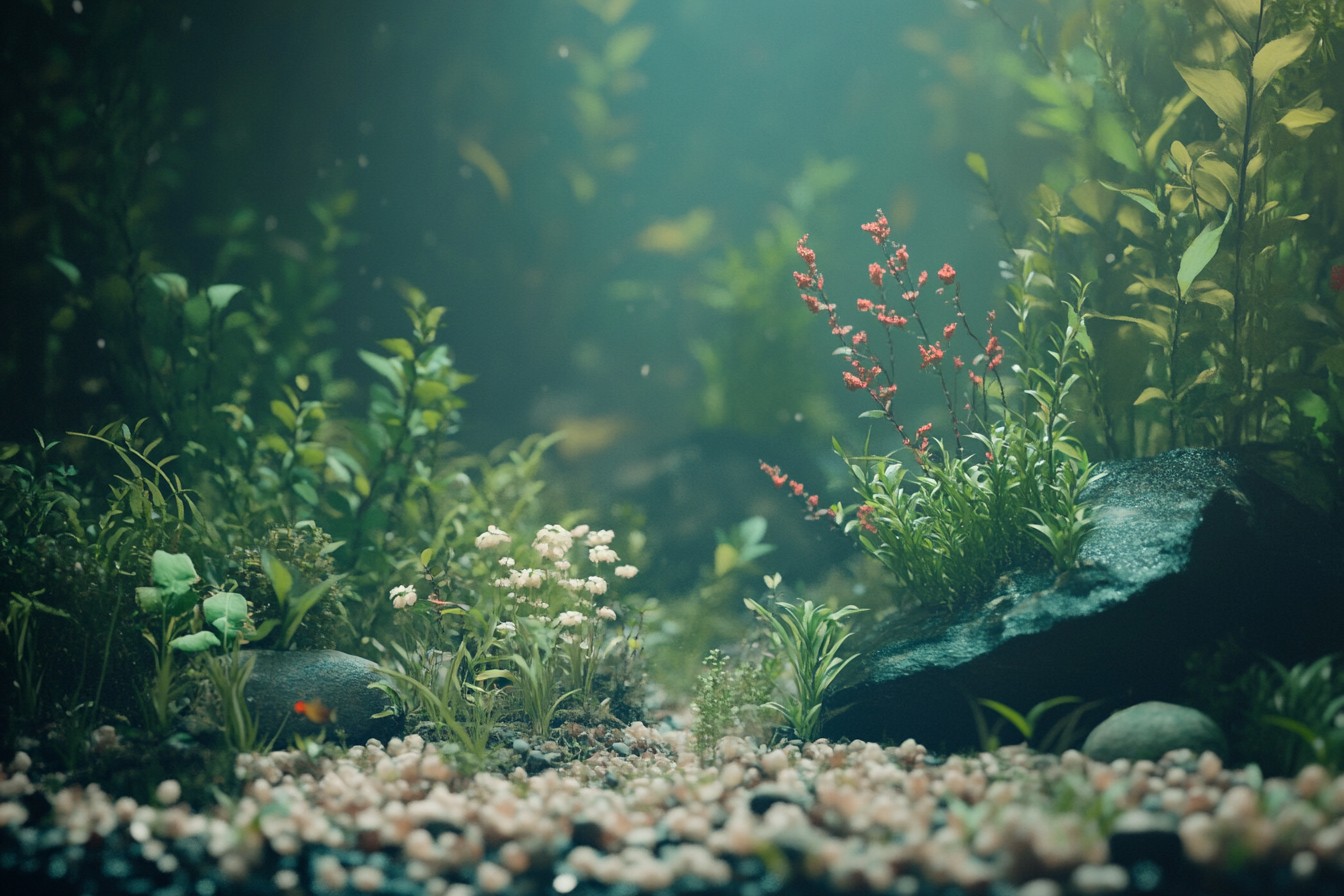
Then I got the flu. Not your average sniffles, but the kind where you’re essentially comatose for a week, communicating only through pained grunts and occasional requests for more sports drinks. By the time I dragged myself back to the tank, it was a disaster by Dutch standards.
Plants had broken formation, growing in whatever direction they pleased. Stems had reached the surface and begun to spread horizontally. The carefully maintained negative space had vanished beneath explosive growth.
I stared at it, scissors in hand, ready to restore order—and suddenly realized I liked it better this way. There was something… alive about it.
Untamed. Natural in a way my previous layout had never managed despite my best efforts. That tank became my first deliberate jungle-style aquascape, and I’ve been hooked ever since.
But make no mistake—creating a successful jungle tank isn’t as simple as letting plants grow wild. There’s an art to controlled chaos, a method to this particular madness. First, let’s be clear on what we’re talking about.
A jungle-style aquascape typically features dense, lush plant growth with minimal visible hardscape. While Iwagumi might show 80% hardscape and 20% plants, jungle flips this ratio entirely. Plants dominate.
Stems reach and twist toward the light. Epiphytes attach to whatever surfaces they can find. The overall impression is one of abundance, complexity, and layered growth.
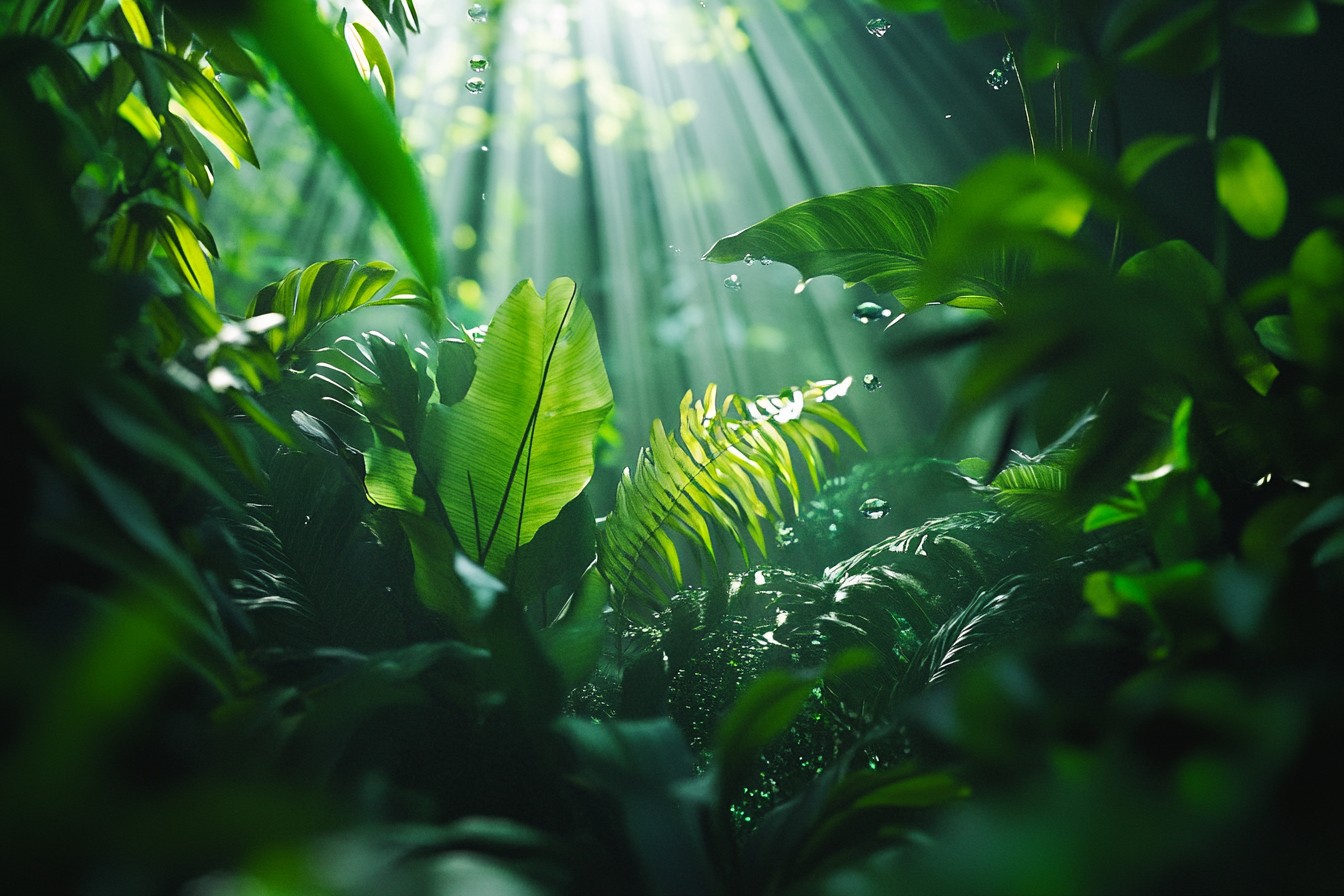
The trick is creating something that looks wild without actually being a disorganized mess. I’ve judged enough aquascaping competitions to tell you that many self-proclaimed “jungle tanks” are actually just poorly maintained aquariums whose owners have rebranded their neglect as an artistic choice. A true jungle tank has intention behind its wildness.
Let’s start with plant selection, because this is where most beginners go wrong. The temptation is to buy one of everything—a stem of this, a bulb of that, a tissue culture cup of something else. The result looks exactly like what it is: a hodgepodge with no visual cohesion.
Wild jungles may be diverse, but they’re not random. Species grow in communities, with similar plants grouped together. My approach is to select no more than 3-4 species for the background, 2-3 for the midground, and 1-2 carpeting plants for the foreground.
Within these constraints, I go for density rather than variety. Instead of one stem each of ten species, I’ll use ten stems each of three species. This creates the lush, abundant look we want while maintaining some visual harmony.
For my most successful jungle tank—a 75-gallon that was later featured in Aquarium Design Magazine—I used Rotala rotundifolia, Hygrophila pinnatifida, and Limnophila sessiliflora as my background plants. Each brings something different: Rotala for its reddish hues and small leaves, Hygrophila for its unique leaf shape and copper tones, and Limnophila for its feathery texture. Grouped together, they create depth and interest without looking chaotic.
Midground plants are critical for a jungle tank—this is where many layouts fall short, jumping straight from tall background plants to carpeting plants. I’m particularly fond of Cryptocoryne species for this zone. They’re bulletproof, come in various sizes and colors, and have that slightly wild, untamed look even when perfectly healthy.
For my jungle tanks, I typically mass-plant Cryptocoryne wendtii ‘Green’ and ‘Brown’ varieties, with maybe some Crypt. undulata for variety. The foreground doesn’t need to be a perfect carpet—that’s too manicured for a jungle look.
I prefer clumps of plants like Sagittaria subulata or Helanthium tenellum, allowing some substrate to remain visible between groups. This creates the impression of a forest floor rather than a perfectly manicured lawn. Hardscape in jungle tanks is mostly a support system for plants, but it still matters tremendously.
I use wood rather than stone almost exclusively—branching pieces like spider wood or vine wood that create vertical and horizontal opportunities for plant attachment. The trick is positioning wood so it will vanish beneath plant growth while still providing the structural “bones” of the layout. My most controversial opinion about jungle tanks?
You should be able to see through them, at least partially. A true jungle has layers and depth—it’s not a solid wall of vegetation. I deliberately create view corridors and windows in my designs, little negative spaces that draw the eye through the vegetation from front to back.
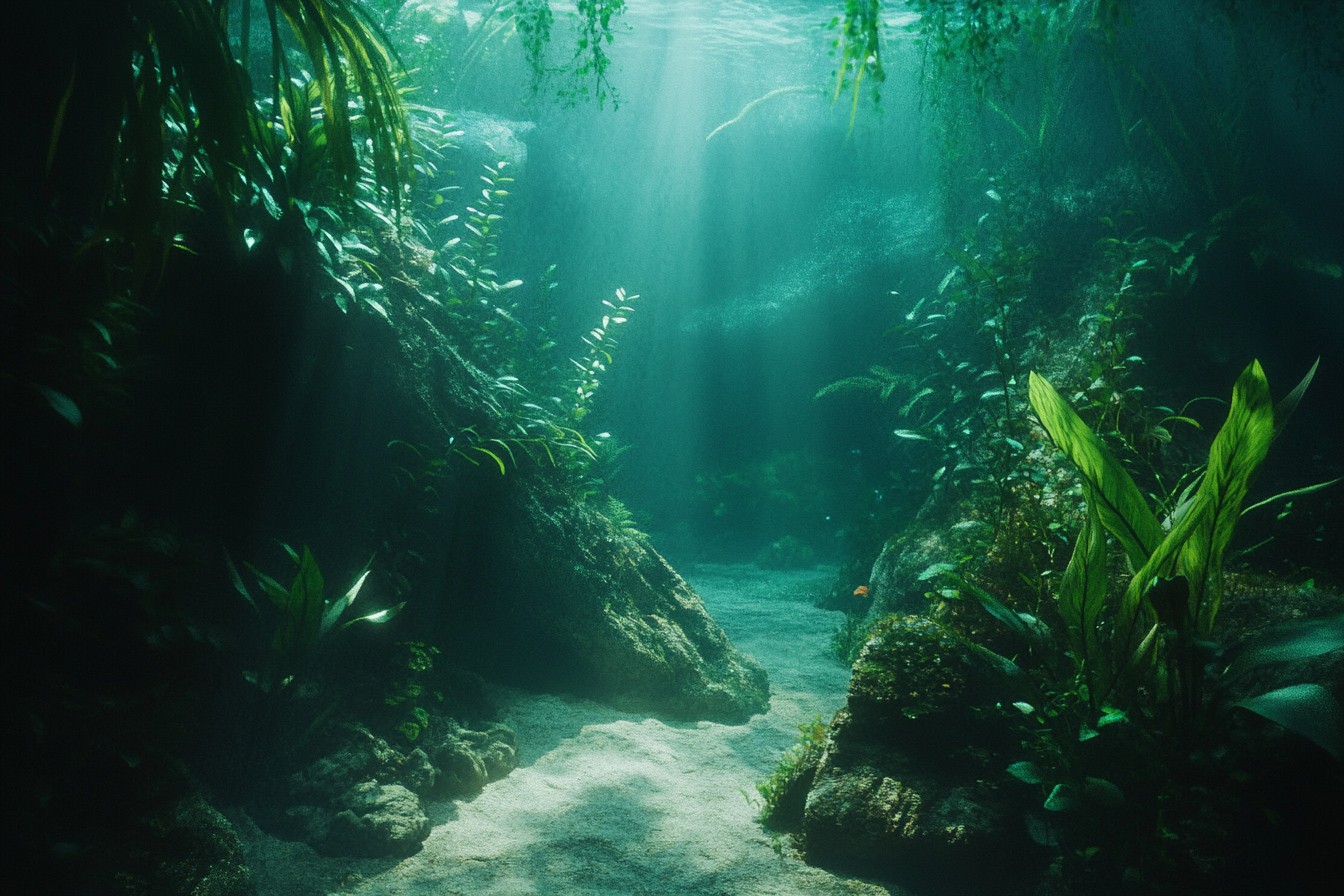
These pathways make the tank feel larger and more mysterious, like you’re peering through dense foliage into the depths of an unexplored forest. Maintenance is where jungle tank owners either succeed or fail. The laid-back appearance fools people into thinking these tanks require less work.
In reality, they need just as much attention as any other style—just different types of intervention. Instead of precise, geometric trimming, jungle tanks require selective pruning to maintain growth patterns while preserving the natural appearance. I trim my jungle tanks roughly every two weeks, but it’s less about scissors and more about direction.
I’ll selectively remove stems that are blocking important sight lines, thin out areas that have become too dense, and redirect growth by pinching tips to encourage branching. The goal isn’t to make everything even, but to guide the controlled chaos in aesthetically pleasing directions. Fertilization is another area where jungle tanks have unique needs.
With their heavy plant load, they’re nutrient hogs. I dose macronutrients almost daily and run CO2 at the high end of the safe range (around 30ppm). This keeps growth robust and colors intense.
Without adequate nutrition, jungle tanks quickly develop holes in leaves, stunted growth, and algae—three surefire ways to transform your underwater jungle from “wild but beautiful” to “neglected and sad.”
Speaking of algae, it’s the jungle tank’s nemesis and occasional ally. With so much plant mass competing for light, some species inevitably get shaded, weaken, and become algae targets. Weekly inspection of lower leaves and prompt removal of affected foliage is essential maintenance.
That said, a light dusting of algae on hardscape can enhance the natural, aged appearance of a jungle tank. I sometimes deliberately allow certain hardscape elements to develop a thin layer of green algae for exactly this reason. Fish selection deserves more consideration than it typically gets in jungle tanks.
With dense planting comes specific requirements for livestock. Forget large cichlids or anything that digs—they’ll destroy your carefully cultivated plant mass in hours. Instead, think about species that would actually inhabit jungle waters: small tetras, rasboras, and pencilfish that school through the open water; dwarf cichlids that claim little territories among the roots; shrimp that scavenge through the undergrowth.
My favorite combination for jungle tanks is a large school (25+) of a single tetra species, a trio of dwarf cichlids (Apistogramma or Mikrogeophagus), and a cleanup crew of Amano shrimp and Otocinclus catfish. This creates natural behaviors and interactions while maintaining appropriate scale. There’s a certain irony to jungle aquascaping that I’ve come to appreciate over the years.
These tanks, which appear so wild and untamed, actually require deep understanding of plant growth patterns, careful initial placement, and regular maintenance to achieve their “natural” appearance. It’s the aquascaping equivalent of those carefully messy hairstyles that actually take longer to create than neat ones. But when it works—when the stems reach and twist toward the light, when tiny fish dart through green pathways you’ve created, when visitors lean in closer to peer through the foliage to the depths beyond—there’s nothing quite like it.
In an aquascaping world often dominated by clean lines and careful restraint, jungle tanks remind us that sometimes, the most beautiful things are a little bit wild.
